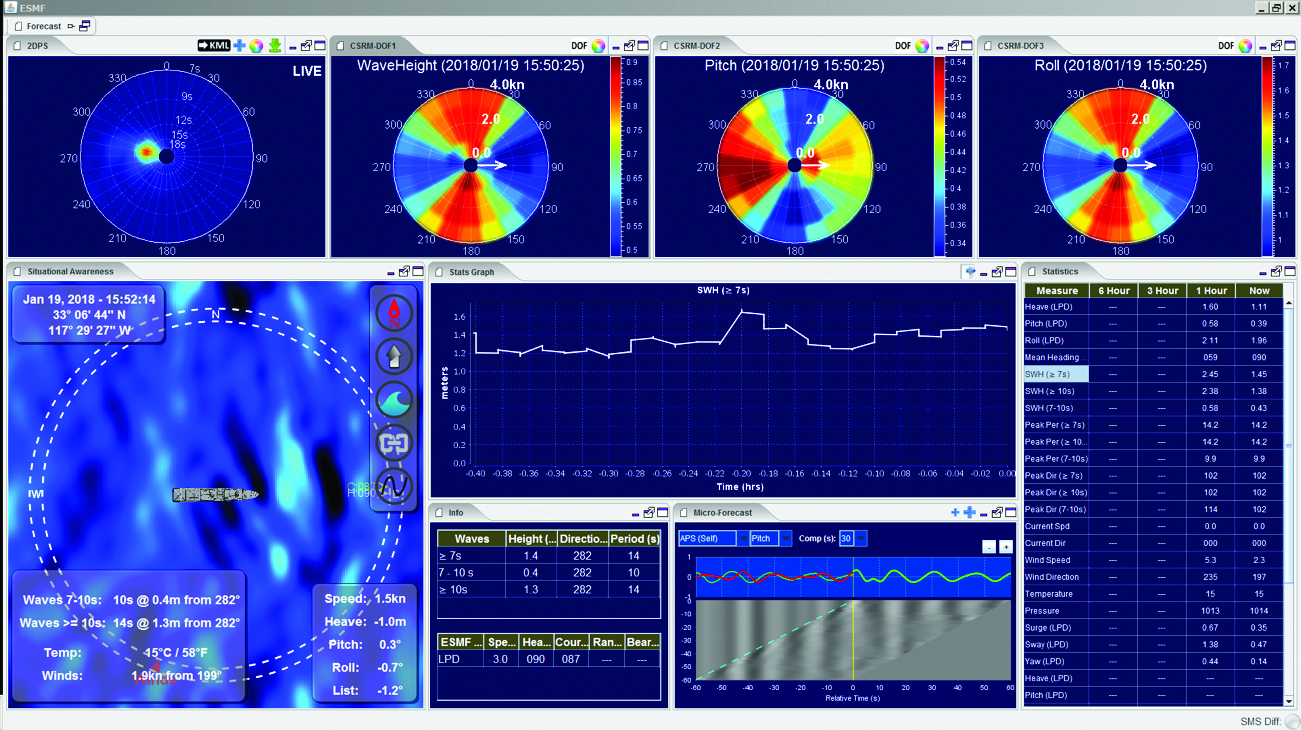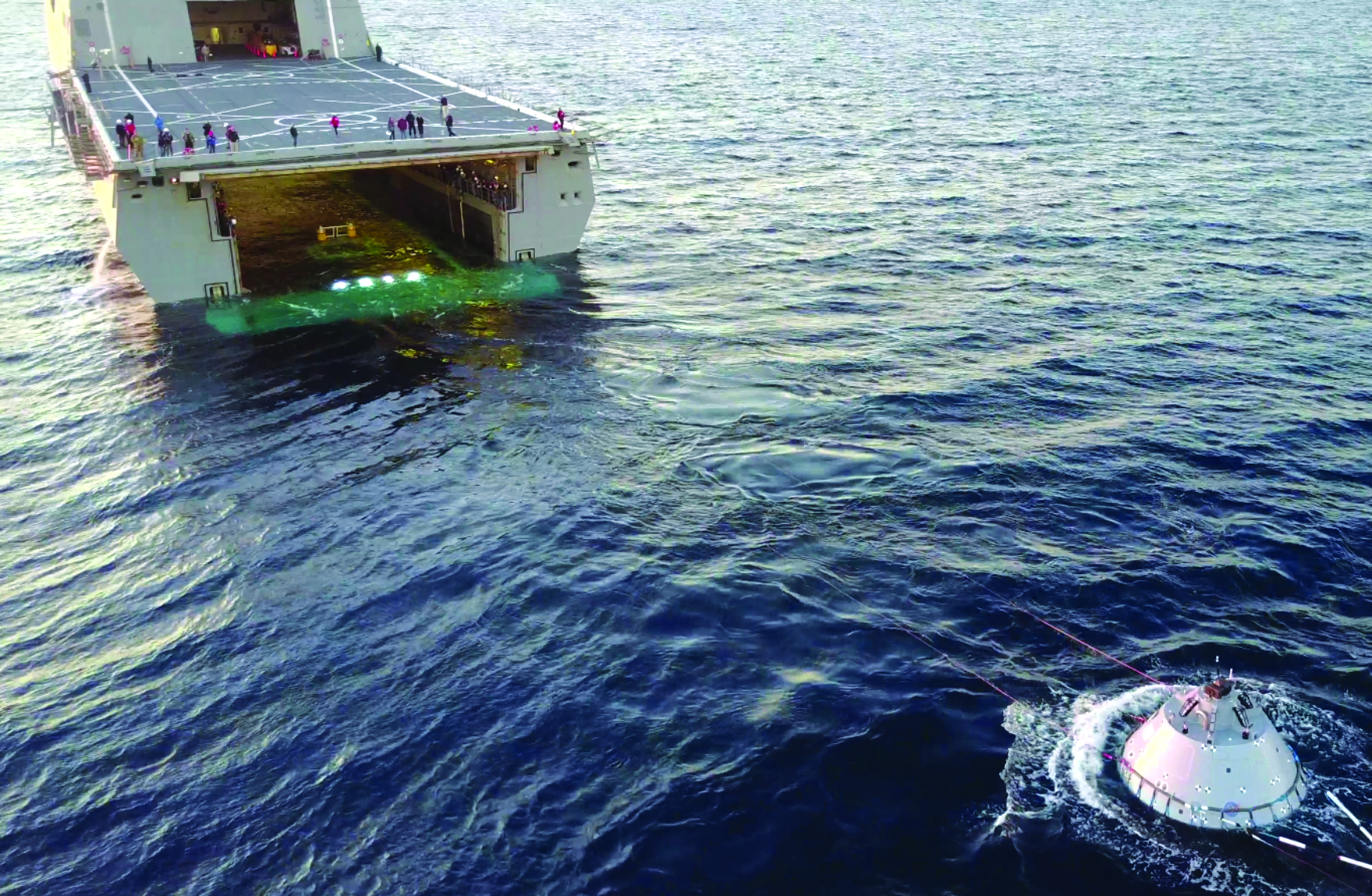Download PDF: Heading Advisory Tool for Crew Module Recovery
Managing the recovery ship motions and the coupled well deck wave dynamics in a real-time ocean wave environment will be critical for the safe recovery of the Orion Crew Module (CM). In response to an NESC request from the KSC Office of the Chief Engineer, the Navy’s Environmental and Ship Motion Forecasting (ESMF) system, developed by Applied Physical Sciences Corp., has been transformed into a ship Heading Advisory Tool (HAT) to support CM recovery activities. The ESMF uses modified X-band radars to measure the Doppler returns from local ocean waves, which are converted into estimates of ocean waves to forecast ship motions. The HAT, developed under an NESC technical support activity in partnership with NASA’s EGS Program, leveraged the ESMF wave radar technology in combination with dynamics models of the ship, well deck, and CM developed specifically to support CM recovery. The result is the prediction of short-term dynamic response statistics for combinations of speed and recovery ship’s heading to provide situational awareness that allows ship operators to minimize wave motions in the well deck.
The CM recovery team identified lateral sloshing waves as being particularly problematic, thus requiring ship roll to be minimized. This is typically accomplished by driving the ship into the waves, which can easily be done in the absence of the HAT by an experienced sailor when the ocean conditions involve a single primary wave system. However, this can be complicated by waves coming from more than one direction, low amplitude swell that is obscured by wind waves, nighttime or low-visibility operations, and rapidly changing sea conditions. Identifying the correct heading to minimize roll can be extremely challenging in these types of scenarios, even for the most experienced sailors. The radars provide real-time situational awareness by scanning the ocean surface and returning measurements of wave orbital velocity out to one kilometer or more, which are converted into a directional ocean wave power spectrum. The HAT uses this information to provide best-heading recommendations to minimize wave motions in the well deck with emphasis on the lateral sloshing wave.
The HAT was used operationally aboard the USS Anchorage to support NASA’s Underway Recovery Test 6 (URT-6) on January 18-25, 2018. Directional wave spectra were refreshed every few minutes and used to predict and display the vessel and well deck wave response across the range of viable speed/heading combinations. Best heading recommendations were provided throughout URT-6, and the technology was subsequently baselined for landing and recovery operations (URTs and missions). The HAT was refined between URT-6 and URT-7 in accordance with NASA-STD-7009, including limited validation studies using the URT-7 measurements and evaluation of model sensitivity. A stand-alone version of the software has been developed and transitioned to NASA, inclusive of the development of a user’s guide and provision of related training.
For more information, contact:
Tannen VanZwieten, KSC, tannen.vanzwieten@nasa.gov




























